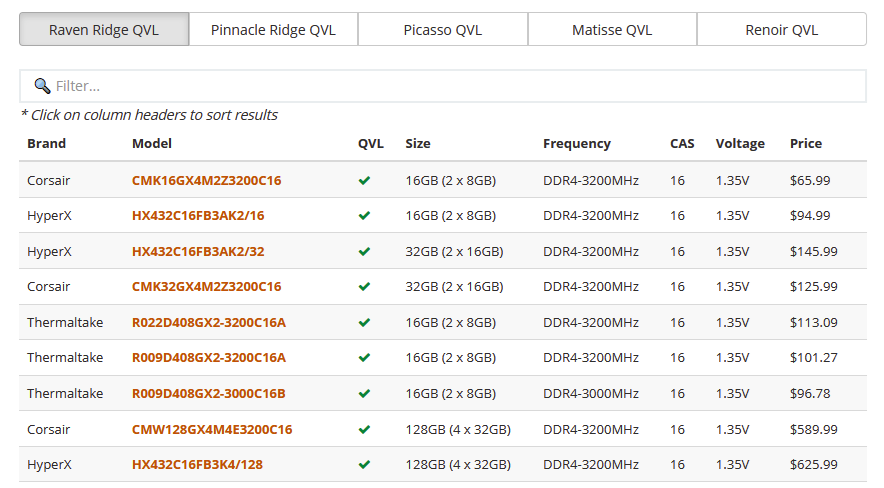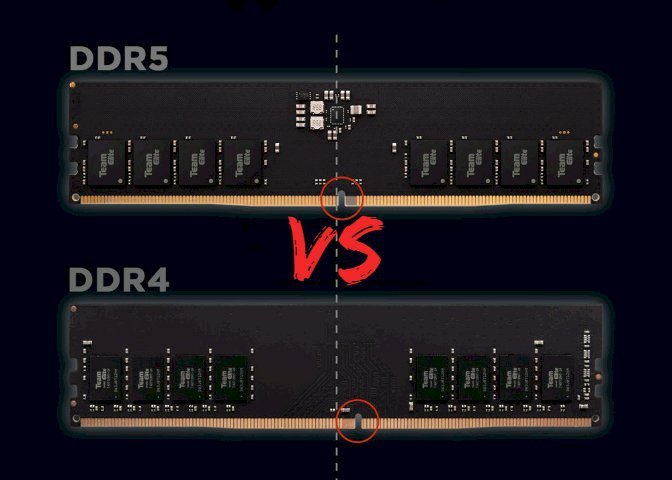The article discusses the importance of Memory QVL Lists in ensuring system stability and performance in custom PC builds.
Table of Contents
Introduction:
In today’s fast-paced technological landscape, building a custom PC has become more accessible than ever. However, with this accessibility comes a myriad of choices and considerations, particularly concerning component compatibility. Among these components, memory modules play a pivotal role in determining system performance and stability.
Explanation of what a Memory QVL List:
At the heart of memory module compatibility lies the Memory Qualified Vendor List (QVL). Essentially, a QVL is a comprehensive index provided by motherboard manufacturers, outlining memory modules that have undergone rigorous testing and validation for compatibility with specific motherboard models. Think of it as a curated selection of memory modules that are guaranteed to function seamlessly with your motherboard.
Importance of memory compatibility for system stability:

Memory compatibility is paramount for ensuring system stability and performance. Mismatched or incompatible memory modules can lead to a host of issues, including system crashes, instability, and reduced performance. By adhering to the recommendations outlined in a QVL, users can mitigate these risks and ensure a smooth computing experience.
Purpose of the article:
The purpose of this article is to serve as a comprehensive guide to understanding and leveraging Memory QVL Lists in your PC build. By exploring the intricacies of QVL Lists, readers will gain invaluable insights into selecting memory modules that align seamlessly with their motherboard, ultimately ensuring optimal system performance and stability.
Understanding Memory QVL Lists:
Definition and purpose of a QVL List:
A QVL List serves as a curated compilation of memory modules that have been tested and verified for compatibility with specific motherboard models. Its primary purpose is to streamline the memory selection process for users, providing them with a definitive reference point for choosing compatible memory modules for their system.
How manufacturers compile QVL Lists:
QVL Lists are meticulously compiled through a series of rigorous testing procedures conducted by motherboard manufacturers. These tests evaluate the compatibility and performance of various memory modules when paired with specific motherboard models. Modules that meet stringent criteria are then documented in the QVL List for user reference.
Why QVL Lists are essential for motherboard compatibility:
QVL Lists play a crucial role in ensuring motherboard compatibility by providing users with a comprehensive list of memory modules that have been validated for use with specific motherboard models. By adhering to the recommendations outlined in a QVL List, users can minimize compatibility issues and ensure optimal system performance.
Also Read: Am4 Motherboard Tier List – A Comprehensive Guide for Choosing the Best Motherboard!
Interpreting a Memory QVL List:
Key components of a QVL List:
A typical QVL List comprises essential information such as the manufacturer, model, and specifications of compatible memory modules. Additionally, it may include details regarding supported memory configurations and any specific recommendations or restrictions imposed by the motherboard manufacturer.
How to read and understand the information provided:
Interpreting a QVL List requires careful attention to detail. Users must familiarize themselves with the layout and terminology employed within the list, ensuring they can accurately identify compatible memory modules that align with their system requirements.
Identifying compatible memory modules from the list:
Identifying compatible memory modules from a QVL List involves cross-referencing the specifications of available modules with the requirements outlined by the motherboard manufacturer. Users should prioritize selecting modules that match their desired specifications while adhering to the recommendations provided in the list.
Importance of Trusting the QVL List:
Ensuring system stability and performance:
Trusting the recommendations outlined in a QVL List is paramount to ensuring system stability and performance. By selecting memory modules listed in the QVL, users can minimize the risk of compatibility issues and optimize their system’s overall functionality.
Avoiding compatibility issues and potential damage to hardware:

Neglecting to adhere to the recommendations outlined in a QVL List can result in compatibility issues and potential damage to hardware components. By placing trust in the QVL List, users can safeguard against these risks and cultivate a reliable computing environment.
Real-world examples of the consequences of ignoring QVL Lists:
Real-world examples abound of users encountering compatibility issues and performance degradation due to disregarding QVL Lists. From system instability to hardware malfunctions, the consequences of overlooking QVL recommendations underscore the critical importance of adherence to these guidelines.
Factors to Consider When Selecting RAM from a QVL List:
Memory type, speed, and capacity:
When selecting RAM from a QVL List, users should consider factors such as memory type, speed, and capacity. By aligning these specifications with their system requirements, users can ensure optimal performance and compatibility.
Compatibility with CPU and other components:
RAM compatibility extends beyond the motherboard, encompassing compatibility with the CPU and other system components. Users should verify that selected memory modules not only adhere to the QVL recommendations but also complement the specifications of other system components.
Budget considerations and performance requirements:
Budget considerations and performance requirements play a significant role in RAM selection. While adhering to QVL recommendations is essential, users must strike a balance between budget constraints and performance expectations when selecting memory modules.
Tips for Matching RAM to Your Motherboard’s QVL List:
Researching and understanding your motherboard’s specifications:
Thoroughly researching and understanding your motherboard’s specifications is paramount to effectively matching RAM to the QVL List. Users should familiarize themselves with their motherboard’s compatibility requirements and utilize this knowledge when selecting memory modules.
Also Read: Motherboard Light Is On But No Power Up – A Troubleshooting Guide!
Utilizing manufacturer resources and support:
Manufacturer resources and support can provide invaluable assistance when matching RAM to a motherboard’s QVL List. Users should leverage these resources to gain insights into compatibility considerations and access additional guidance if needed.
Considering future upgrade options and expansion:
When matching RAM to a motherboard’s QVL List, users should consider future upgrade options and expansion capabilities. Selecting memory modules that align with potential future requirements can facilitate seamless system upgrades and expansion down the line.
Accessing and Navigating Your Motherboard’s QVL List:
Finding the QVL List on the motherboard manufacturer’s website:
Accessing the QVL List on the motherboard manufacturer’s website typically involves navigating to the support or downloads section. Users should locate the relevant product page for their motherboard model and access the QVL List from the available documentation.
Using search and filtering options to locate specific memory modules:
Many motherboard manufacturer websites offer search and filtering options to facilitate the identification of specific memory modules within the QVL List. Users can utilize these features to streamline the selection process and identify compatible memory modules efficiently.
Understanding any additional notes or recommendations provided:
In addition to listing compatible memory modules, QVL Lists may include additional notes or recommendations from the motherboard manufacturer. Users should carefully review this information, as it may provide valuable insights or considerations when selecting memory modules for their system.
FAQ’s
1. What is a Memory QVL List?
A Memory QVL List is a curated index provided by motherboard manufacturers, detailing memory modules that have undergone testing for compatibility with specific motherboard models.
2. Why is memory compatibility important for system stability?
Memory compatibility is crucial for system stability as mismatched or incompatible memory modules can lead to issues such as system crashes, instability, and reduced performance.
3. How are QVL Lists compiled?
QVL Lists are compiled through rigorous testing procedures conducted by motherboard manufacturers, evaluating the compatibility and performance of various memory modules.
4. How can users interpret a Memory QVL List?
Users can interpret a QVL List by familiarizing themselves with its layout and terminology, and cross-referencing the specifications of available modules with the requirements outlined by the motherboard manufacturer.
5. Where can users access their motherboard’s QVL List?
Users can typically access their motherboard’s QVL List on the manufacturer’s website, usually located in the support or downloads section under the product page for their specific motherboard model.
Conclusion
In conclusion, mastering memory compatibility through an understanding of QVL Lists is essential for ensuring a stable and efficient PC build. By adhering to the recommendations outlined in a QVL List and considering factors such as memory type, compatibility, and future expansion, users can cultivate a reliable computing environment that meets their performance needs. Embrace the insights provided in this guide and embark on your journey to a seamlessly compatible PC build.